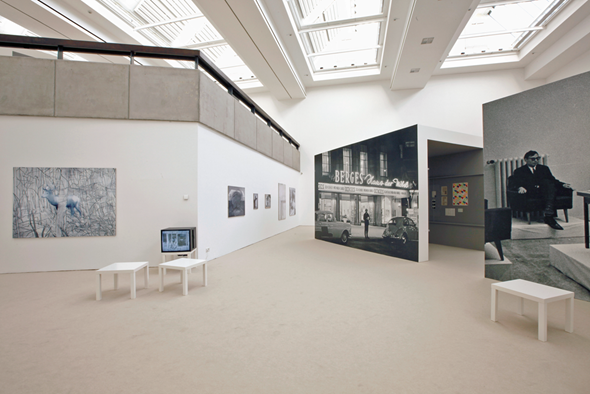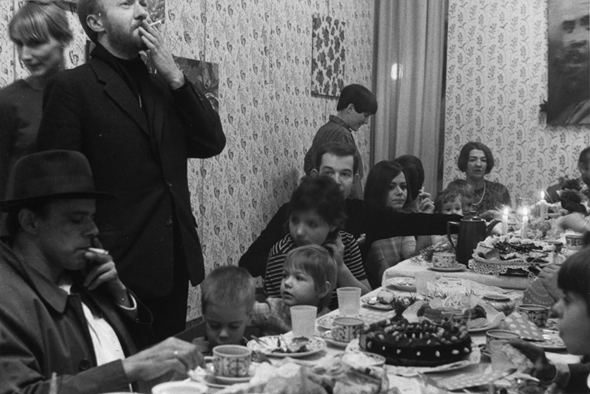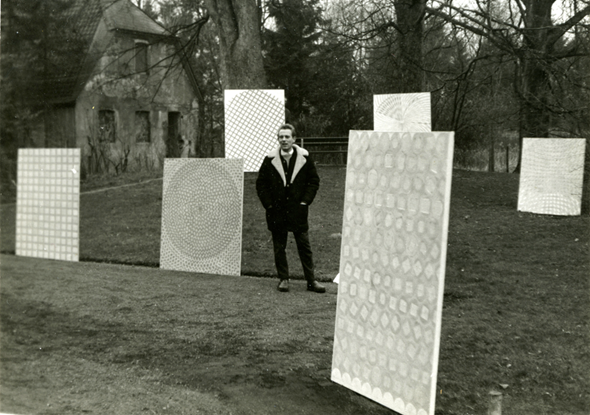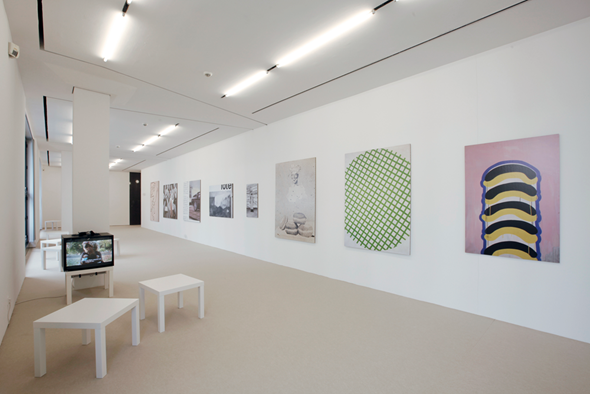»Living with Pop: A Reproduction of Capitalist Realism«
Kunsthalle Düsseldorf 21.7.–29.9.2013

I am a photograph
Commodities tend to resist those forms of memory that they themselves do not generate. The current quasi-trend to restage or reassemble historical exhibitions – the frame-by-frame replay of When Attitudes Become Form this summer at the Fondazione Prada in Venice, for example – might be described as an advanced symptom of the commodification of art historical memory. Apparently, it is no longer the single work of art that doubles as a commodity: the exhibition format itself has entered an age of mechanical reproducibility.
This exhibition at the Kunsthalle Düsseldorf is a self-described reproduction of Manfred Kuttner, Konrad Lueg, Sigmar Polke and Gerhard Richter’s Leben mit Pop: A Demonstration for Capitalist Realism (1963), first instantiated as an action at the Berges Möbelhaus in Düsseldorf. On view is a documentary, archival spin-off of exhibitions and actions produced by those four from 1963 through 1966 centering on a common theme: the invented term Capitalist Realism. Starting with the four artist’s showing of canvases in an empty shop, the exhibition then traces Lueg and Richter’s infamous, stationary »action« at the Berges Möbelhaus – where they sat around on furniture placed on plinths, while the news, and a documentary on Adenauer, played on a background television – the result here is not so much a »readymade« or replica exhibition, but an archival display. This display, in which the original works are only shown as reproductions, functions as documentary (displaying related ephemera, posters, letters and notebooks), commentary (showing news documents, for example, relating to the exhibitions’ reception) and even as a generative platform: curators Elodie Evers, Magdalena Holzhey and Gregor Jansen collaborated with artist Christopher Williams, who assembled a series of historical and contemporary video works, presented throughout the exhibition, that offer a contrapuntal commentary on Capitalist Realism (an idea and phrase that appears in Williams’ own work).

Kaffee und Kuchen von Konrad Lueg
Galerie Schmela, Düsseldorf 1966, im Rahmen der Ausstellungswoche Hommage an Schmela
Archiv künstlerischer Fotografie der rheinischen Kunstszene (AFORK) – Stiftung Museum Kunstpalast
© VBK, Vienna 2013

Viewing such works today, one sees a direct line – in attitude as well as form – linking the 1963 exhibition, through artists like Richard Prince, and later, the détourned actions of collectives like the Bernadette Corporation and Colin de Land’s Art Club 2000, members of which iconically photographed themselves sitting around the white couches of a Gap store in Manhattan. The video series that Christopher Williams curated included a silent, black-and-white HD film titled The Disinfectant Sun (2013) by young Düsseldorf artists Philipp Rühr and Henning Fehr: the camera moves past storefronts on the bourgeois shopping street Nordstraße in Düsseldorf, trash, objects and people fluttering about, shopping as consumers par excellence. As a response to emergent forms of Pop as well as to the mass-mediation of the public sphere, the original exhibition presented alongside such newer works, make clear that the conditions that prompted that original exhibition have only further rooted themselves today. Pop is everywhere, and we go on living with it.
PABLO LARIOS

Photo: Achim Kukulies
